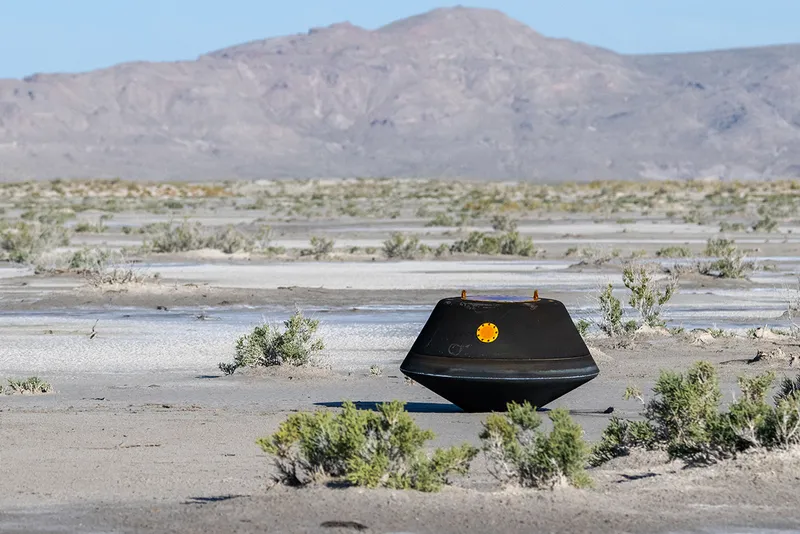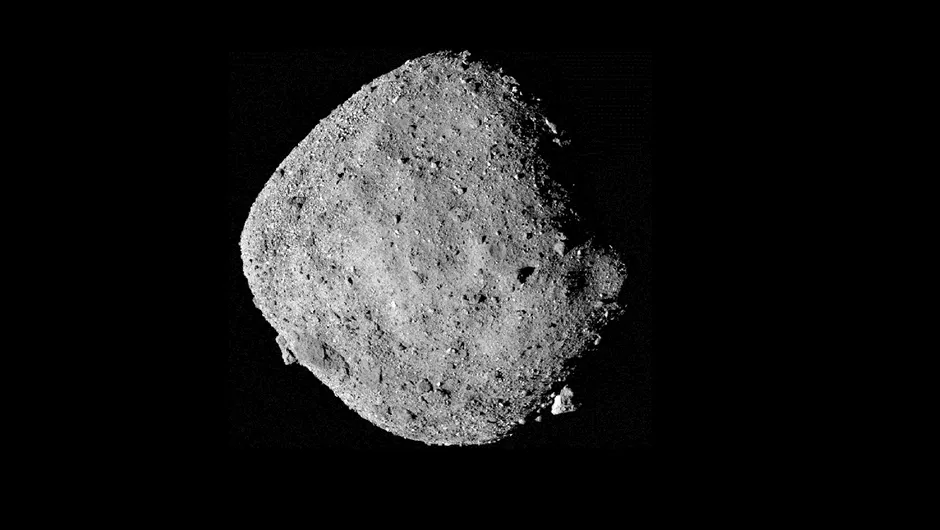High levels of water and carbon have been found in the initial results from the sample brought back from asteroid Bennu by NASA’s OSIRIS-REx mission.
On Earth, carbon and water for the building blocks of all known life.
As Bennu is around 4.5 billion years old, meaning it dates from the origins of the Solar System when our planet was first forming and the sample offers a window back to this time.
“The OSIRIS-REx sample is the biggest carbon-rich asteroid sample ever delivered to Earth and will help scientists investigate the origins of life on our own planet for generations to come,” says NASA Administrator Bill Nelson. “Almost everything we do at NASA seeks to answer questions about who we are and where we come from,” says Nelson.
Recovering OSIRIS-REx's sample

OSIRIS-REx touched down on the surface of asteroid Bennu on 20 October 2020, collecting at least 60g of material from the surface.
This was stored in a return capsule, which fell to Earth on 24 September 2023. After a quick recovery, NASA transported the capsule to the Johnson Space Center in Huston for analysis.
Over the next 10 days, the OSIRIS-REx team disassembled the capsule to access the precious cargo before any initial analysis or results could be obtained.
When the science canister lid was first open, the team found an abundance of extra asteroid dust covering its outside.
While a boon of bonus material, this had to be carefully recovered and cleaned to prevent it contaminating the main sample which slowed down the recovery process.
“Our labs were ready for whatever Bennu had in store for us,” says Vanessa Wyche, director, NASA Johnson. “We’ve had scientists and engineers working side-by-side for years to develop specialized gloveboxes and tools to keep the asteroid material pristine and to curate the samples so researchers now and decades from now can study this precious gift from the cosmos.”
Getting initial results from the OSIRIS-REx sample

Within the first two weeks, the OSIRIS-REx team conducted a ‘quick-look’ analysis of the sample.
This included a chemical analysis, which discovered the water and carbon, but the team have also created a 3D model of one of the grains, revealing its diverse interior.
These initial results are just a flavour of what is still to come as the sample is distributed to the OSIRIS-RES science team – a cohort of over 200 scientists spread across the world – for detailed analysis.
“As we peer into the ancient secrets preserved within the dust and rocks of asteroid Bennu, we are unlocking a time capsule that offers us profound insights into the origins of our Solar System,” said Dante Lauretta, OSIRIS-REx’s principal investigator from the University of Arizona, Tucson.

“The bounty of carbon-rich material and the abundant presence of water-bearing clay minerals are just the tip of the cosmic iceberg.”
The team will analyse around 30% of the sample from OSIRIS-REx over the next two years, building from these initial results to a full understanding of the asteroid.
The remaining 70% will remain in storage for future generations of scientists to study, ensuring OSIRIS-REx’s legacy continues for many years to come.
“These discoveries, made possible through years of dedicated collaboration and cutting-edge science, propel us on a journey to understand not only our celestial neighbourhood but also the potential for life’s beginnings,” says Lauretta.
“With each revelation from Bennu, we draw closer to unravelling the mysteries of our cosmic heritage.”

